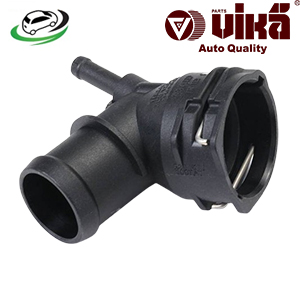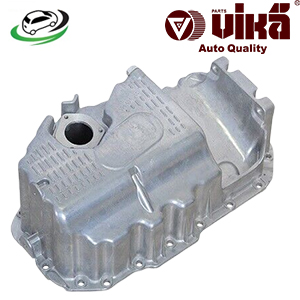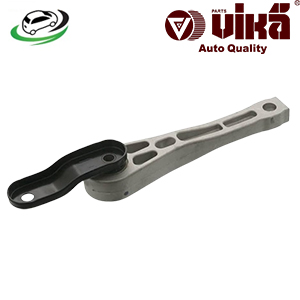-6%
Get Front Engine Mount Volkswagen Sharan/Tiguan 7N0199855B
An engine mount is a crucial component in a vehicle’s engine assembly, designed to secure the engine to the vehicle’s frame or chassis while isolating and dampening engine vibrations. This guide will explore the function, types, benefits, maintenance, and common issues associated with engine mounts.
Function of an Engine Mount
Secure Engine Position
The primary function of an engine mount is to securely hold the engine in place within the engine bay. It ensures that the engine remains properly aligned and positioned, even under the stresses of acceleration, deceleration, and cornering.
Vibration Isolation
Engine mounts are designed to absorb and dampen vibrations generated by the engine. This prevents these vibrations from being transmitted to the vehicle’s frame and cabin, enhancing ride comfort and reducing noise.
Torque Management
Engine mounts help manage the torque produced by the engine, preventing excessive movement and ensuring that the engine’s power is efficiently transferred to the drivetrain.
Protection
By holding the engine securely and dampening vibrations, engine mounts protect other components in the engine bay from damage caused by excessive movement or vibration.
Types of Engine Mounts
- Rubber Engine Mounts
- Construction: Made from a rubber component bonded between two metal plates.
- Advantages: Cost-effective, good at isolating vibrations, and widely used in many vehicles.
- Disadvantages: Rubber can deteriorate over time due to heat and oil exposure, leading to reduced effectiveness.
- Hydraulic Engine Mounts
- Construction: Contain a hollow rubber chamber filled with hydraulic fluid.
- Advantages: Excellent at dampening vibrations and reducing noise, especially at low frequencies.
- Disadvantages: More complex and expensive than rubber mounts, and the hydraulic fluid can leak over time.
- Polyurethane Engine Mounts
- Construction: Made from durable polyurethane material.
- Advantages: More durable than rubber, resistant to oil and heat, and provides better performance in high-stress applications.
- Disadvantages: Can be stiffer than rubber mounts, potentially transmitting more vibrations to the cabin.
- Active Engine Mounts
- Construction: Use electronic control systems to adjust the damping characteristics in real-time.
- Advantages: Provide optimal vibration isolation and ride comfort by adapting to driving conditions.
- Disadvantages: Very expensive and complex, primarily used in high-end and performance vehicles.
Benefits of High-Quality Engine Mounts
Improved Ride Comfort
High-quality engine mounts effectively isolate engine vibrations, resulting in a smoother and quieter ride. This enhances overall driving comfort, especially during long trips.
Enhanced Performance
By securely holding the engine in place, high-quality mounts ensure efficient power transfer and reduce unwanted engine movement. This contributes to better handling and performance.
Increased Durability
Durable engine mounts are designed to withstand the stresses and strains of everyday driving, reducing the frequency of replacements and maintenance costs.
Protection of Components
Effective engine mounts protect other engine bay components, such as hoses, wiring, and exhaust systems, from damage caused by excessive engine movement.
Noise Reduction
Quality engine mounts help reduce engine noise transmitted to the cabin, creating a more pleasant and quieter driving environment.
Maintenance of Engine Mounts
Regular Inspection
- Visual Checks: Regularly inspect engine mounts for signs of wear, cracks, or deterioration. Look for visible damage, oil contamination, or separation of the rubber from the metal plates.
- Listen for Noises: Pay attention to unusual noises, such as clunking or banging sounds, which may indicate worn or damaged engine mounts.
Addressing Leaks
- Check for Leaks: For hydraulic engine mounts, inspect for any signs of hydraulic fluid leaks. Leaks can reduce the mount’s effectiveness and indicate the need for replacement.
- Engine Leaks: Ensure that engine oil or other fluids are not leaking onto the engine mounts, as this can cause rubber mounts to deteriorate more quickly.
Replacement Intervals
- Manufacturer’s Recommendations: Follow the vehicle manufacturer’s guidelines for engine mount replacement intervals, typically specified in the owner’s manual.
- Signs of Wear: Replace engine mounts if you notice significant wear, damage, or reduced effectiveness in dampening vibrations.
Common Issues with Engine Mounts
Wear and Deterioration
- Symptoms: Increased engine vibrations, clunking noises, and noticeable engine movement.
- Causes: Over time, engine mounts can wear out due to exposure to heat, oil, and constant stress from engine vibrations and movements.
Cracks and Breakage
- Symptoms: Visible cracks in the rubber, separation of components, and reduced damping ability.
- Causes: Physical stress, harsh driving conditions, and age can cause engine mounts to crack or break.
Fluid Leaks (Hydraulic Mounts)
- Symptoms: Hydraulic fluid leaks, reduced vibration damping, and increased noise.
- Causes: Leaks can occur due to damage or wear in the hydraulic chamber, reducing the mount’s effectiveness.
Engine Misalignment
- Symptoms: Uneven engine alignment, increased wear on other components, and difficulty in maintaining engine position.
- Causes: Worn or damaged mounts can lead to misalignment of the engine, affecting overall performance and component lifespan.
Replacement of Engine Mounts
Tools and Equipment
- Basic Tools: Wrenches, socket sets, jacks, and jack stands.
- Replacement Mounts: Ensure the new mounts are compatible with the make and model of the vehicle.
Steps for Replacement
- Safety First: Ensure the vehicle is securely supported on jack stands or a lift before starting the replacement process.
- Locate Mounts: Identify the engine mounts’ location. Typically, there are three or four mounts in a vehicle.
- Support the Engine: Use a jack with a wood block to support the engine’s weight and prevent it from shifting during the replacement process.
- Remove Old Mounts: Carefully remove the bolts and components securing the old engine mounts. Take note of their orientation and position.
- Install New Mounts: Install the new engine mounts, ensuring they are properly aligned and securely fastened.
- Lower the Engine: Gradually lower the engine back into place, ensuring the mounts are correctly seated and aligned.
- Test: Start the engine and check for any unusual noises or vibrations to ensure the new mounts are functioning correctly
Follow us on Facebook for more parts.



